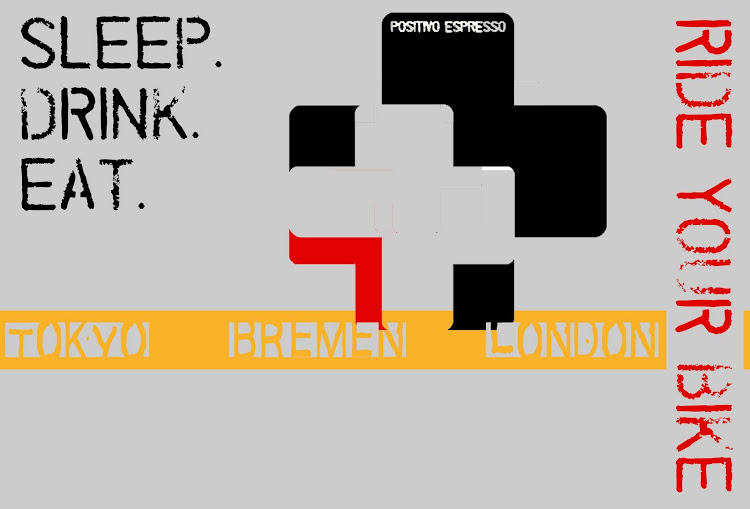Yes, I would use a "clip on" seat post fender for riding in the rain. But mostly, I would just avoid riding in the rain, or get a bit wet.
Then I started doing longer Audax rides. The rides are scheduled long in advance, and go through several days, different geographies, and you will not finish many (any?) if you just skip the ones where rain is a possibility. Thinking back over the past 3 years, I have gotten wet on EVERY Audax event I have done that is 1000 kms or more. 2010 Chubu 1000, 2011 PBP, 2012 Tohoku 1700, 2012 Cascade 1200, 2012 Rocky Mountain 1200.
Now I seem to get rain even on mid-length brevets. We had rain during much of the night on the October 2012 Kanagawa 600, and again at night for the last 6-8 hours of the January 2013 Kinki Audax 400.
Cyclist culture varies by geography with regard to fenders. Lots of riders in Japan complete audax events fenderless, even if rain is forecast. The same in Europe, where lots of the PBP riders did not have fenders or true "randonneuring" set ups, and were on typical road racing bikes with 700x23mm tires.
But try to ride a Seattle International Randonneur (SIR) event in the rain without fenders and you will be treated just slightly better than a leper. I started Cascade 1200 in June 2012 with just my seat post clip-on blade fender, and was soon firmly told to move to the rear of the pace line (in a voice that included a bit of thinly disguised contempt--a tone rare during Audax events and more suited to racers).
Apparently a rear fender with mudflap is intended primarily to prevent water from splashing the rider behind you, and is considered an essential part of cycling etiquette in those rainy parts. Indeed, a blade, or larger rear seatbag, will protect my backside reasonably well, but does nothing for the person trying to draft behind me. And as sage Sheldon Brown noted, fenders protect your bike from the road grit that can get inside your headset and, to some extent, reduce the amount of grime on your derailleur and brakes.
| Seat post clip-on blade fenders on my aluminum and titanium bikes - just keep the spray off my back |
--------------------------------------------------------
Axiom Fastback DLX Reflex. I picked up a pair of clip-on plastic fenders that are designed to fit on a road bike that does not have fender attachment eyelets or significant extra brake/fork clearance.
These clip-on fenders, the "Axiom Fastback DLX Reflex", have mudflaps and a very nice reflective stripe. Unfortunately, they do not attach well to my Reynolds Ouzo Pro fork. And without eyelets and bolts to attach the fender directly to the bicycle frame, I could not manage to install them on a road frame in a way that is stable or did not rub against my tires, even when I used a 700x23 tire. They were worthless for me. Then again, they were not expensive, and I thought I might even cannibalize the mudflaps and some portion of the reflective striping. BUT SEE BELOW -- I got these to work with a different fork and they are just fine ...
--------------------------------------------------------
Procraft Rainbow Race 35. Also in 2012, I ordered a cheap (18.50 Euro) pair of Procraft Rainbow Race 35 black plastic fenders that require eyelets and use traditional hardware. These I planned to use on the steel Yamabushi, with its cyclocross clearances and ample braze-ons and eyelets.
I only tried to install them in January, after putting the disk brake on the Yamabushi. The disk brake completely blocked the path of the metal rod you can see in the photo, which extends from the eyelet near the front hub/axel and attaches at two places on the front fender. With a metal rod on each side of each fender, there are 4 rods attaching in 8 places in all. And they are way too wide and thick for my other bikes, even the Ti Travel Bike with its relatively generous brake clearances.
So they will sit in the garage, unusable and unused, for the time being.
--------------------------------------------------------
Curana C Lite Alloy. In late February, I rode the Yamabushi home from work, and stopped at the Potavel shop near the corner of Komazawa Dori and Kyu-Yamate Dori. They had what looked like a very nice, light weight aluminum fender. Better yet, the fender was noticeably stiffer than the plastic Procraft, and so required only a single rod for each of front and rear. The rod attaches to the eyelets on both sides of the hub. And since I had the bike with me at the shop, I could confirm that the disk brake would not interfere with the fender rod, nor the rod with the brake. I bought the set and did the installation as soon as I returned home.
| Front fender -- single rod wraps around the wheel and does not block the disk brake. |
These fenders won an award at Eurobike 2008 ... so I am a bit late to the party!
They are now tested over many commutes and a few rides outside the city, and work as advertised.
My experience with the Procraft Rainbow 35 (useless for now) and the Curana C Lite Alloy (a great purchase) speaks to the importance of not buying a product online unless and until you really understand how it works with your bicycle.
--------------------------------------------------------
Rear Clip-on Blade -- SKS Xtra Dry 3. If you do want a rear clip-on blade fender, I swear by the SKS Xtra Dry 3. It is designed for wide mountain bike tires, so still does the job even if knocked a bit off center. The clip-on mechanism is very easy to use and adjust. And it is light weight, fits easily in luggage, etc., etc. Perfect for use on a road bike during a rainy one day event.
---------------------------------------------------
Update. The Axiom Fastback DLX Reflex fenders work!
| Fender clearance |
I was going to put on the plastic traditional fenders, ... but need to tweak one piece of connecting hardware, so tried the Axiom Fastbacks.
They do fit, both front and rear, and seem reasonably secure. And the mud flaps protect riders to the rear, unlike some other clip-on fenders.
No rubbing, with 700x23 tires on fairly wide rims (Velocity A23 or HED Belgian). And now I can report that they also work with 700x25 tires (Conti Four Season Gran Prix 700x25), and over lengthy rides in the rain (14 hours of rain on the May 2013 Kanagawa Audax 400km Okitsu Classic).
The "quick release" feature is great. I was planning on installing traditional fenders on the Ti travel bike ... but I very much like the QR feature -- the ability to remove them in a few seconds and just leave the hardware on my fork and seat stays -- I will stick with these for the time being.
Two minor issues. First, the plastic latch that secures the right side of the rear fender broke. Still, the fender stayed secure even without any latch over a 2-day ride. And I was able to use superglue and a minor reinforcing piece to revive the latch, at least for the time-being. Two months later, the plastic latch for the front left attachment also snapped off as I tried to assemble my bike after a train journey and put the fender on at the beginning of ride. Again, these latches seem unnecessary ... but if they break, then why have them at all?
Second, the rear fender ends at the brake/seat stay, and so in heavier rain/standing water on the road there is definitely some spray off the wheel onto the seat tube and back of my legs. Still, it is good to get 90% of the protection of a full fender with something that can come on and off in a minute or two. Perfect for the travel bike.
Third, the fender attachments form large, ugly attachments on the fork and the seat stays. These are semi-permanent features, even when the fenders are removed during travel or a ride on an entirely dry day. I am not so worried about the aerodynamics, but these large plastic clumps defeat at least one of the reasons for a removable-style fender.
--------------------------------------------------------
Update. SKS Raceblade Long plastic removable fenders! After a bit of browsing on Amazon, I realized that there is one removable fender that fits road bikes, is reasonably priced and seems to get near universally positive reviews. Also, even though the product is manufacturer-rated for 18-23mm tires, online comments suggested that it works just fine with 700x25mm tires as well. I purchased a set a few weeks ago from Wiggle (after carefully studying the attachments to confirm that they ought to fit my Ti Travel bike). They arrived at the end of June and are now installed.
The "semi-permanent" attachments are smaller and less visible than on the Axiom Fastbacks. The main attachments are small metal pieces that fit onto the front/rear quick release skewers. By using the QR skewers, instead of some user-selected location on the fork and seat stays, the location is certain every time the fenders are taken on or off. This allows use of a fixed length fender stay that wraps around the fender. The fit is perfect for a 700x25mm tire (or 23mm or 20mm). No need to tweak it. No worries about the fender adjustment getting re-set after the bike leans against a wall and something gets knocked out of kilter.
The other semi-permanent attachments attach to the brake. One sticks out toward the rear, clipping to the main fender body. A second sticks out to the front, allowing a 150mm attachment extending around the wheel in front of the fork (front) or seat stay (rear). Significantly better coverage than the Axiom Fastback, without the need to fit a fender through a narrow area under a road bicycle brake. Plus, as with the Axiom, the product includes mudflaps for extended coverage. No backwash for a rider following in a paceline.
On the other hand, there is still slightly less than full rear fender coverage along the seat tube, and no front or rear coverage under the brake itself.
One of the semi-permanent attachments looks like this:
Although it take a bit of work to get these installed in the first instance, once they are on, the fender just slides on, and comes off with a small push on a tab.
Here is the 150mm attachment to the rear fender, with the plastic tab visible:
Assuming no problems experienced over the next few weeks, I will use the SKS Raceblade Long fenders instead of the Axiom Fastbacks for London Edinburgh London.
 |
| "Final" LEL setup, including SKS Raceblade Long fenders? |















2 comments:
I am also curious about the
bikesmart Tangent SL
It is designed for wide mountain bike tires, so still does the job even if knocked a bit off center. The clip-on mechanism is very easy to use and ... schutzblechmountainbike.blogspot.de
Post a Comment